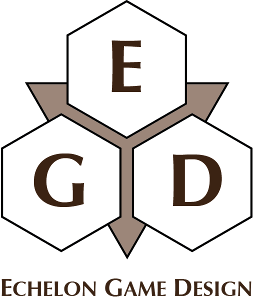I realized there’s another way to handle task resolution in Echelon.
Okay, yes, it still uses dice, it’s not that different.
A while ago — not so many blog posts, but more than a year and a half ago — I described a dice pool mechanism that I quite like and that looks like it will work, but can be a lot of work at the higher end because you roll one die (or two in combat) per tier. As fun as it can be to roll a big mitt full of dice, this is a trifle unwieldy.
There might be a more convenient way to do it. The dice pool had you roll one die per tier, so everyone at the same tier had at least the potential of getting the same result, unlikely as it might be. Talents would allow you to increase the size of the dice rolled, so being better — more relevant talents of different types (for stacking reasons) — meant you were likely to get more successes.
| Tier | Die |
| Pre-basic | d2 |
| Basic | d4 |
| Expert | d6 |
| Heroic | d8 |
| Master | d10 |
| Champion | d12 |
| Legendary | d20 |
Consider this: each tier has a die associated. When called on to roll for something, you roll one die for your tier, then the best one for each talent type (cornerstone, common, or capstone) that applies. The highest die roll is used to determine success.
A team of Expert-tier characters needs to cross a chasm. There is a ragged-looking old rope bridge. Normally a check wouldn’t be needed, but in this case a character needs to make DC 3 to cross at half speed (and if they try to cross at full speed, DC 5 — and failing by more than 3 means falling).
Each character will roll up to four dice. The dwarven mountaineer, accustomed to working in rough terrain and with rope) can roll 2d6 instead (the tier die, and a die for his Expert Mountaineer common talent). The elven acrobat, the naturally agile paragon of tightrope walking herself, rolls 3d6 (one for tier, one for Expert Elf cornerstone, one for Expert Acrobat). The human cleric would be stuck with only 1d6 because while he’s an Expert-tier character, he’s got no other specific talents related to the task. Probably; if she’s a disciple of the Spider Goddess I imagine I’d allow the Spider Domain (common talent) to apply as relevant.
In this scheme, everyone in the same tier has the same potential (can roll the same maximum value). The more relevant talents (of different type) you can bring to bear, the better your chance of success. Diminishing returns, though, because each additional die does not improve the chance as much as the previous die did.

How likely do you want failures to be? A Legendary character with no special skills at chasm-crossing has 3/20 chance of failing to cross the chasm if I’ve understood everything correctly.
Weird, I wasn’t notified of either of these comments.
And yes, legendary with nothing else going for him would be stuck (at least temporarily) 3/20 of the time in this model. Odds are very good that the legendary character would have something relevant, though.
To compare to D&D, assuming a DC 10 challenge, a level 20 character with nothing useful (Dex 10, no skills, etc.) would fail 9/20. Even with DC 5, which is as easy as you’ll ever have to roll for, this character fails 4/20.
I take it that if you are an Expert character with a relevant Basic talent that you roll max(d6, d4)? (The examples all have Expert everything but this is the most obvious interpretation.)
Yes, that would be so.